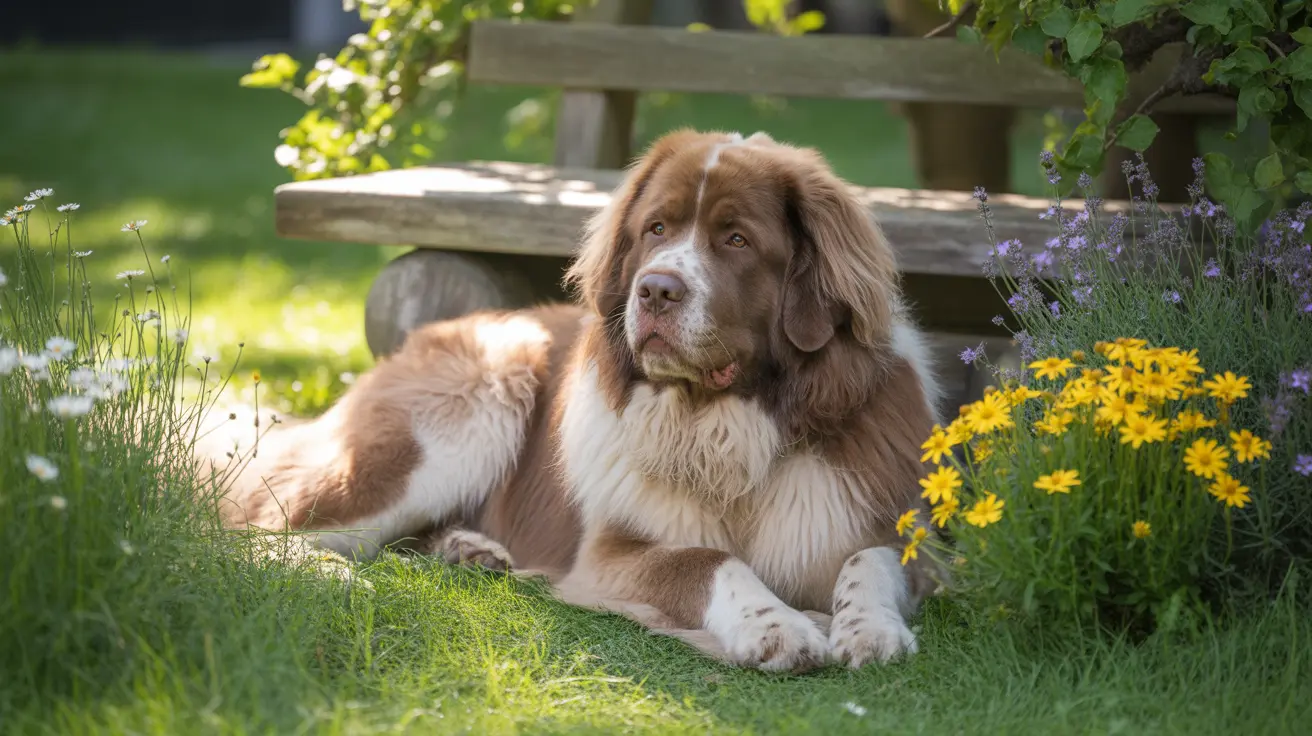The majestic Newfoundland dog breed is known for its impressive size and gentle nature, but many are unaware of the fascinating variety of coat colors these gentle giants can display. While black Newfoundlands are most common, several rare and striking color variations exist, each with its own unique genetic background and characteristics.
In this comprehensive guide, we'll explore the world of rare Newfoundland dog colors, from officially recognized variations to uncommon patterns that sometimes appear in the breed. Whether you're a breed enthusiast, prospective owner, or simply curious about these magnificent dogs, you'll discover the fascinating spectrum of Newfoundland coat colors.
Standard vs. Rare Newfoundland Colors
The American Kennel Club recognizes four standard colors for Newfoundlands: black, brown, gray, and Landseer (white with black markings). However, several rare variations exist beyond these official standards:
Standard Colors
- Black (most common)
- Brown (chocolate)
- Gray (dilute black)
- Landseer pattern
Rare Color Variations
- Beige/Cream (dilute brown)
- Black and Tan
- White and Brown
- Irish Spotted pattern
The Genetics Behind Rare Coat Colors
Rare Newfoundland coat colors result from specific genetic combinations. The primary genes involved include:
The B-locus determines whether a dog will be black or brown, while the D-locus controls color dilution. When these genes combine in certain ways, they create unique and rare color variations. For example, a gray Newfoundland occurs when the dilution gene affects a black coat, while beige results from dilution of a brown coat.
Health Considerations for Rare-Colored Newfoundlands
While rare colors can be striking, it's important to understand potential health implications. Color dilution alopecia can occasionally affect dogs with dilute coat colors, though this condition is relatively uncommon in well-bred Newfoundlands.
Responsible breeders prioritize health testing and genetic screening to ensure they produce healthy puppies, regardless of coat color. This includes testing for:
- Color-related genetic conditions
- Standard breed health issues
- Genetic diversity markers
Breed Standards and Recognition
Different kennel clubs have varying positions on rare Newfoundland colors. While some colors may be beautiful, they might not be recognized for show purposes. The AKC's standard is particularly specific about acceptable colors and patterns.
This doesn't mean rare-colored Newfoundlands make inferior pets - they can be just as loving and capable as their traditionally-colored counterparts. However, it's important for potential owners to understand these distinctions when choosing a puppy.
Caring for Rare-Colored Newfoundland Coats
All Newfoundlands require regular grooming, but some rare colors may need special attention:
- Lighter colors may show dirt more easily
- Dilute colors might need extra protection from sun exposure
- Regular brushing helps maintain coat health regardless of color
- Professional grooming can help maintain coat condition
Frequently Asked Questions
What are the rarest Newfoundland dog coat colors beyond the standard black, brown, gray, and Landseer?
The rarest Newfoundland colors include beige/cream (dilute brown), black and tan, and the Irish spotted pattern. These colors are uncommon because they result from specific genetic combinations and are not recognized in breed standards.
How does the dilution gene affect the appearance and rarity of gray and beige Newfoundlands?
The dilution gene (d) lightens the base coat color. When it affects black dogs, it creates gray; when it affects brown dogs, it creates beige. These colors are rare because the dilution gene must be inherited from both parents (dd) to express the dilute color.
Are rare Newfoundland colors like black and tan or Irish spotted recognized by major breed clubs for showing?
No, these rare colors are not recognized by major breed clubs like the AKC for show purposes. Only black, brown, gray, and Landseer patterns are typically accepted in show rings.
Can rare coat colors in Newfoundlands cause specific health issues, such as color-dilution alopecia?
While color-dilution alopecia can occur in dogs with dilute coat colors, it's relatively uncommon in well-bred Newfoundlands. However, responsible breeders should test for genetic health issues regardless of coat color.
How can DNA testing help breeders and owners understand and manage rare Newfoundland coat colors?
DNA testing can identify color-related genes and potential health issues, helping breeders make informed decisions about breeding pairs. It also helps owners understand their dog's genetic makeup and potential health considerations.
Conclusion
While rare Newfoundland dog colors can be striking and unique, it's essential to prioritize health, temperament, and proper breeding practices over coat color when choosing a Newfoundland. Understanding the genetics and implications of rare colors helps ensure these magnificent dogs maintain their excellent health and characteristic gentle nature for generations to come.






